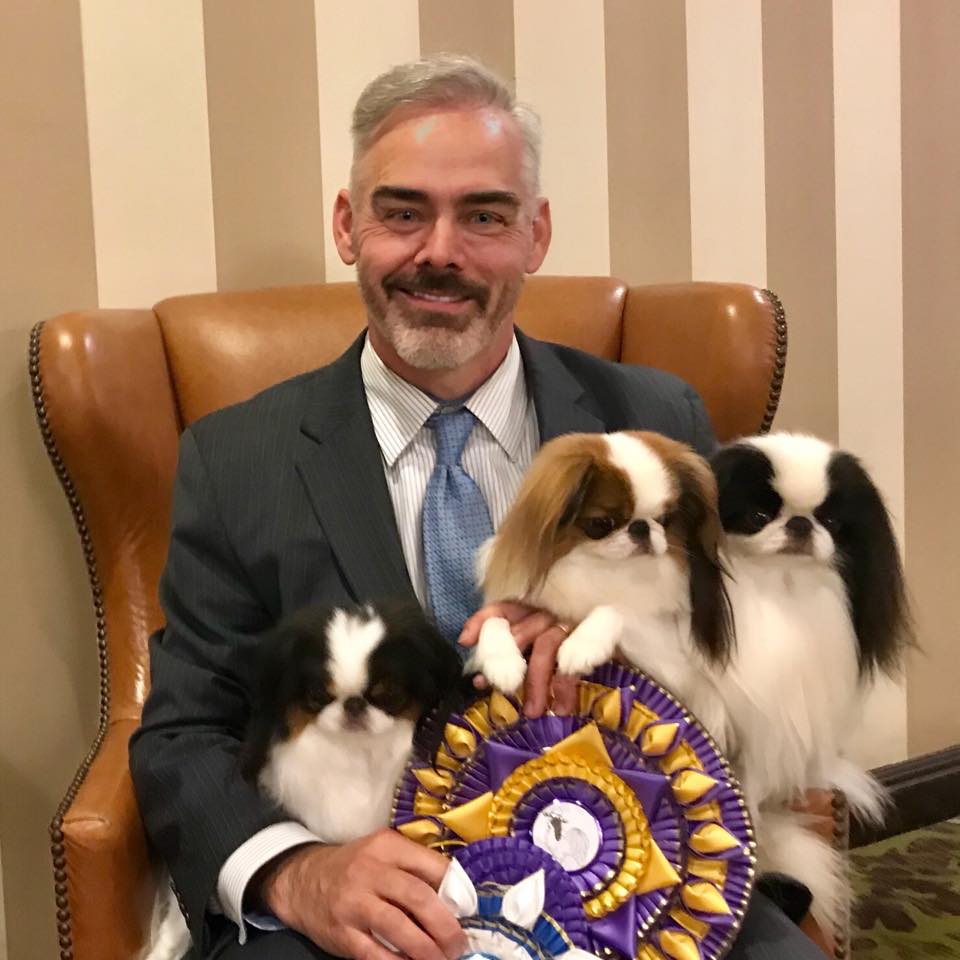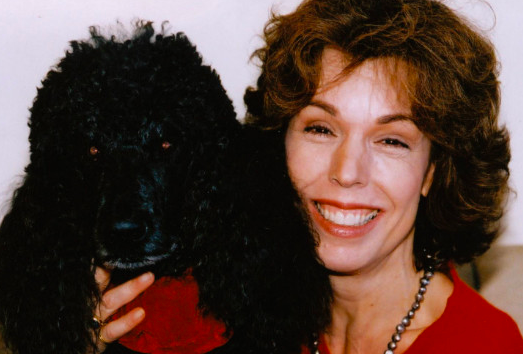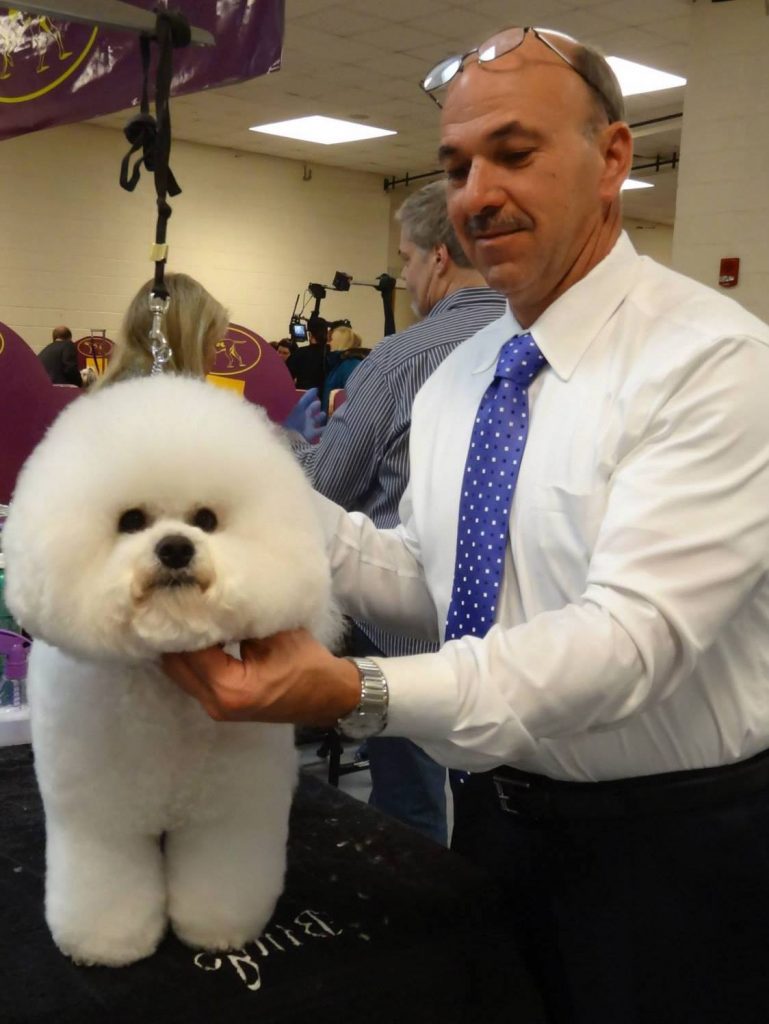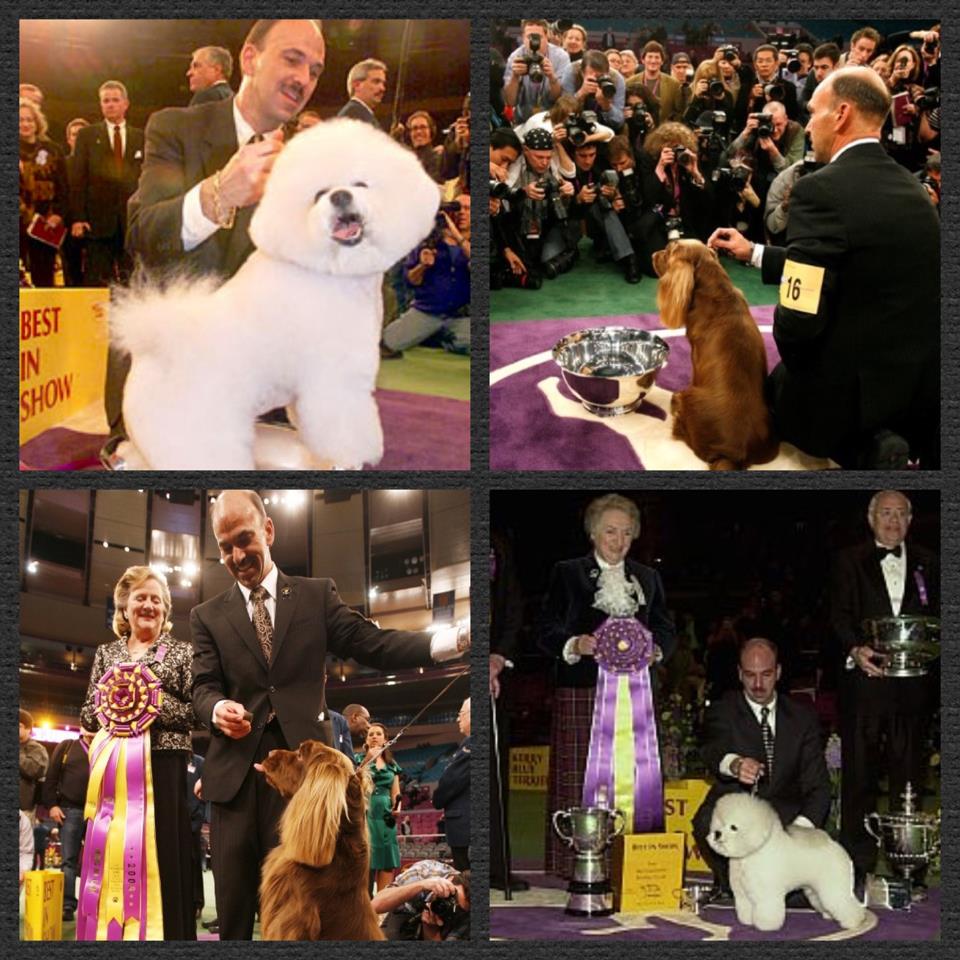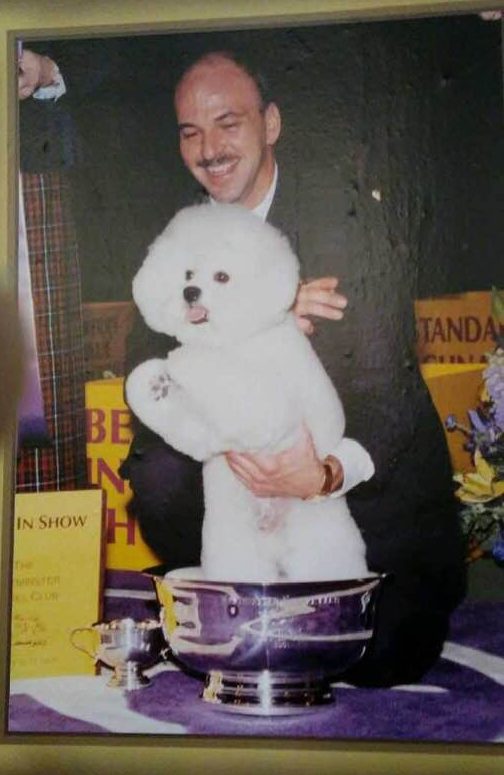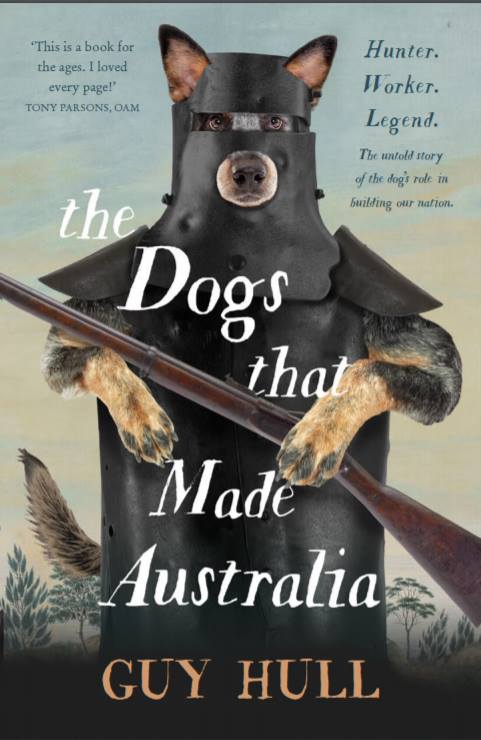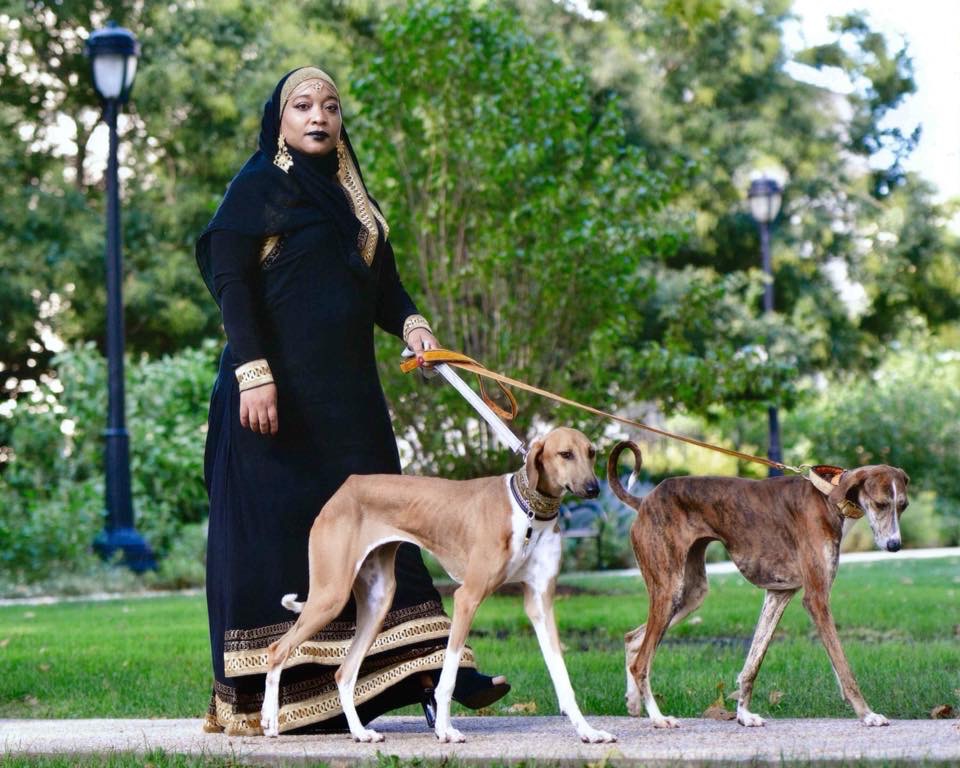Posts by Laura Reeves
358 – Dale & Jane Martenson: Touche Japanese Chin
Dale & Jane Martenson: Touche Japanese Chin
Master Breeders Dale and Jane Martenson of Touche Japanese Chin, have produced more than 500 champions in a very difficult breed. Dale shares invaluable, detailed advice for success.
Purposely bred dogs allow us to pick the dog that best fits our lives, Martenson said. He and Jane started with Cocker Spaniels in the ‘80s when the breed was deeply competitive.
“Cockers helped us learn how to lose. We showed dogs for two years before we earned a point,” Martenson said. “You learn a lot on those drives home.”
In the original dog show, there was winning and losing, Martenson said. You got good or got out.
“There was a degree of respect and those were the people (handlers) we wanted to learn from,” Martenson said.
“You can raise dogs successfully on a profitable basis with integrity. This is an achievable goal. You don’t have to be a martyr. Use the tools we have today,” Martenson said.
Advice from Touche
On a breeding program: Have a good core line of bitches, keep the line sound and clean. Can maintain a small but effective program based on your bitches.
On owner-handlers: When you know your dogs and can compete with your dogs, you know the areas you want to improve.
On breeding decisions: Have A and B lists of faults – what you can live with and what you can’t
On importing: Don’t ever believe your own advertising
On outcrossing: Don’t discount the value of the things you know for the comfort of the things you don’t know
On money in breeding: If you don’t make money with your dogs then you aren’t doing it very well. Should be a self-funding hobby. Should be able to get out of it, what you put into it.
On retiring breeding dogs: You cannot be a great breeder and be a hoarder too.
“One thing I love about our sport is anybody can come in and compete at any level. You don’t have to be of a high finance. It can be your own dog you raised if you do the equal work. You also have the advantage of knowing your animal more intimately,” Martenson said.
357 – Genetic Testing Helps You Swipe Right for Your Dog
Genetic Testing Helps You Swipe Right for Your Dog
Today’s dog breeders are getting a boost from the burgeoning field of genetic testing. Doberman Diversity Project co-founder Sophie Liu talks about her work using advanced tools to improve genetic health issues in Doberman Pinschers.
Liu was a vet student researching her next dog when she became aware of the multitude of health challenges facing Dobermans.
According to the DDP website:
OUR MISSION is to reduce the incidence of heritable diseases in the Doberman by studying and addressing the depression in the overall genetic diversity of the Doberman breed and studying and researching widespread disease-associated mutations, through comprehensive genetic testing and analysis, development and sharing of evidence-based breeding findings, development of online breeder decision-making tools, and long-term tracking of results to measure the effectiveness of varied approaches to breeding — in terms of genetic health and longevity.
Combatting DCM
Liu said that a major focus of their research is geared toward reducing the incidence of Dilated Cardiomyopathy in the breed, which currently is plagued by the devastating disease, with nearly half of the breed being affected.
A great deal of DDP’s research and studies are directed at developing a tool which establishes a genetic value for the risk of passing on DCM. Building on the work done by Guide Dogs for the Blind, DDP hopes to enable breeders to determine an “estimated breeding value” for DCM on a pedigree and genetic basis.
“This is a super powerful tool,” Liu said. “This is how guide dogs have systematically improved their breeding program.”
The two genes identified to date that are associated with DCM in Dobermans are autosomal dominant, Liu said. Because the disease shows up late in a dog’s life, it can be hard to stay ahead of, she noted.
Genetic testing offered through Embark at cost enables DDP to track genetic data. Study participants also update all clinical health data for the research project.
Need more dogs tested
Liu said that in just about two years DDP has tested more than 2,500 dogs, but they need many more.
“We need more dogs tested. Affected and unaffected dogs. We need raw data and clinical updates and medical records,” Liu said. The guide dog programs’ success relies on having the advantage of huge breeding colonies that are all tested in house, she added.
DDP’s relationship with Embark enables breeders to find the right balance between the inbreeding percentages needed to fix type and maintain health. Embark’s breeder tool enables people to make that decision for themselves, Liu noted, “just like Tinder for your Doberman.”
“We’re finding out that the genetic bottlenecks are worse than we thought,” Liu noted. “Over 99% of Dobermans share a single paternal haplotype, in other words, one stud dog is behind nearly every Doberman tested.”
The research is also turning up valuable information about the heritability of various traits – in other words, how much variation of the trait is genetic. For example, studies indicate 40 percent of fear behavior is genetic. For more on the topic of how genetics impact fear behavior, listen to Pure Dog Talk Episode 221.
“People go to breeders for consistency,” Liu said. “The better we get at it, the better it is for everyone.”
356 – Soul Dog: Investigative Journalist’s Poodle Journey
Soul Dog: Investigative Journalist’s Poodle Journey
Emmy award-winning investigative journalist Elena Mannes shares her story of the journey on which she embarked with her first dog, a Standard Poodle.
Soul Dog – A Journey into the Spiritual Life of Animals chronicles Mannes’ determined quest to harness her inner dog whisperer by learning to decipher the unspoken language present in every animal-human relationship.
“I brought Brio home… and it wasn’t really going according to plan. I really just thought I would get trainers and support and it wouldn’t really change my life to have a puppy,” Mannes said with a rueful chuckle.
“One time, I had him in Central Park. I had started to have him off leash… he would take off and not come back when I called. I was walking backward, screaming at him to come. All of the sudden, there was no ground under me… I stepped off the edge of the boat pond and fell in…. Brio eventually came back and just stared at me.”
Skeptic to believer
“I felt sort of desperate. I didn’t talk dog. I heard about animal communicators, but I was a real skeptic. I’m a TV journalist, I don’t like woowoo things.
“(Brio) changed me in so many ways as the years went by and the connection became so deep and really life changing for me,” Mannes said.
Mannes also addressed her decision to choose a purebred dog.
“I respect people who rescue, but in my situation at the time I really didn’t know enough. I had a sense of Standard Poodles that they were so smart. I was scared to death (of adding a dog to my life),” Mannes said, adding that the predictability of a purebred dog helped provide some comfort in this decision.
***
Elena Mannes is a multi-award-winning independent documentary director/writer/producer as well as an author. Her first book, The Power of Music: Pioneering Discoveries in the New Science of Song, is published by Walker Books/Bloomsbury USA (May 31, 2011).
Her work has appeared on both public and commercial television. Her honors include six national Emmys, a George Foster Peabody Award, two Directors Guild of America Awards, and nine Cine Golden Eagles.
Mannes developed and created a primetime PBS special, The Music Instinct: Science and Song,a co-production with WNET/Thirteen.
Mannes productions include the feature documentary film Amazing Grace with Bill Moyers (PBS) which won the Directors Guild Award as well as an Emmy for directing. For ABC, Mannes has produced a special with Diane Sawyer The Amazing Animal Mind, exploring the intelligence and emotions of dogs and other animals, as well as other ABC hours including Ground Zero with Peter Jennings which won an Emmy for best Historical Program.
Mannes has also produced and directed documentaries for CBS REPORTS and segments for 60 MINUTES and PRIME TIME LIVE (ABC).She worked with George Lucas to develop a television project incorporating documentary and dramatic sequences.
Mannes is a member of one of the first families of American music. Her grandparents founded the Mannes College of Music in New York City; and her great uncle, Walter Damrosch conducted the Metropolitan Opera and instigated the building of Carnegie Hall.
355 – Scott Sommer on Owner/Professional Handlers Relationship
Scott Sommer on the Owner/Professional Handlers Relationship
Scott Sommer, handler of two different Westminster Kennel Club Best in Show winners is back for the third and final installment of his conversation with host Laura Reeves.
Today we’re talking about owner handlers and professional handlers. Plus, Sommer talks about the most difficult trimming techniques he learned and offers invaluable tips from an experienced veteran about working with scissored coats and other tricks of the trade.
Handlers compete with the best to improve
Discussing the Owner Handled competition, Sommer reflects on the past when direct competition between amateur and professional handlers forced owners to “Step up and compete with handlers, which made them better.”
“Owner Handled allows them to compete against one another. I’m not opposed, but I think it separates the whole dog show world,” Sommer observed. “It takes away from people’s ability to learn. You have to compete with the better (competitor) to make your dog better. It makes a difference.
“The Owner Handlers have to compete with people who can make a dog look like it isn’t. It’s a hard thing to do. I worked for Michael Kemp for 16 years. Even now, I struggle with some things. It takes a long time to learn.”
Still learning after all this time
Sommer said that even after 40 years, his biggest struggle is trimming a dog’s off-side front leg.
“It’s horrible,” Sommer said. “The hardest thing in the world for me to get right was the neck in to shoulder. The best thing you can do is never touch the head and neck until a day after they are bathed. You can trim the body. But if you trim (the head/neck of a Bichon Frise) right after you dry, there’ll be no hair left. It needs at least a day.”
Sommer noted that climate, humidity, and even water quality makes a tremendous difference in coat texture. He advised bathing a Bichon two to three days ahead of the show in order to have enough spring in their coat.
“When I was in dry areas, I’d just spray water and pat the hair down,” Sommer said. “Kaz (Hosaka, legendary poodle handler and protégé of Anne Rogers Clark) taught me that.
“There’s so much to tell people. (Learning all of this) doesn’t just happen overnight.”
354 – Veterinary Legislation is Slippery Slope for Pet Owners
Veterinary Legislation is Slippery Slope for Pet Owners
Dr. Marty Greer, DVM, NAIA (National Animal Interest Alliance) board member, puts on her legislative hat and talks with host Laura Reeves about proposed legislation in New York and around the US regarding crop, dock, declaw, bark softening and more.
“As soon as they start dictating to us what veterinary care we need and need not do, we are on a slippery slope we aren’t going to like,” Greer said. “Once they start saying you cannot do an ear crop, tail dock, declaw, bark softening… You MUST do a spay… then we get into you must do a dental cleaning, you must provide this level of veterinary care, you have all rights taken away as pet owner. If those things are mandated, we will have people stop getting veterinary care because it’s being dictated. That scares me a lot.”
These procedures should be a decision made between veterinary and client, Greer noted.
“While a veterinarian is involved, we can provide supportive care. Without veterinary involvement, it can fall into the hands of lay people, where we don’t have pain management or appropriate anesthesia. Once veterinarians lose these procedures, the level of care goes down for the animals.”
Veterinarians have been coerced into thinking this is not an ethical thing, Greer observed. Noting “those procedures are going to keep happening.”
Isn’t it ironic…
Meanwhile, as legislation is proposed banning these very safe, minimally invasive procedures, other legislation is advocating mandatory spay/neuter.
“Patients are being spayed/neutered too young and with insufficient care. Research has shown tremendous health risks with young spay/neuter,” Greer said. “And spay, particularly, is a major abdominal, full anesthesia procedure.
“The primary reason we spay/neuter is because we are unable or too lazy to manage our animals’ sexual behavior. There is no reason to spay/neuter our pets unless they have tumors. Less bone cancer. Less urinary incontinence. Less obesity when pets are left intact.
“People are being forced into having an invasive elective procedure done on their pets and then we tell them they can’t have a minor elective procedure, like bark softening, that allows them to keep the dog in their neighborhood.
“There are many more functional reasons to do tail docks, for example, than a spay.
“Our ancestors came to the US because they wanted the freedom to make decisions for themselves,” Greer insisted.
353 – Scott Sommer 2: Money in Dog Shows and Setting Goals
Scott Sommer part 2: Money in Dog Shows and Setting Goals
Scott Sommer, one of only a handful of people to show multiple dogs to Best in Show at Westminster Kennel Club, joins host Laura Reeves in part two of this conversation for a deep dive on a tricky topic — money. How to get it, how to spend it and how much it matters.
Sommer also shares his view of the difference between a “good” dog and a “great” dog. For him, it’s all about the dog’s “heart.” He describes the iconic Bichon Frise, JR, Ch. Special Times Just Right, as having a “heart of a lion.”
“Sometimes the dog with heart will beat a dog that is *technically* better simply because it will always perform, no matter the conditions,” Sommer said.
The back story on how Sommer acquired JR for his client, Cecelia Ruggles, and worked with JR’s owners, Eleanor McDonald and Flavio Werneck, is absolutely a testament to the power of determination.
“Flavio wanted me to have the dog,” Sommer said. “I called Cel every day for a month. Finally, I told her, ‘I don’t care who shows that other dog, it will beat this other dog we have every time,’” Sommer recalls. Next thing he knew, he was meeting Eleanor at the Houston airport with JR in a Sherpa bag and “shouting with joy.”
Campaigning a show dog, at any level, requires a plan, Sommer said. Whether your goal is to achieve number one status in your breed or number one all-breeds in the country, the steps are the same.
Have a goal
Every dog is different. A dog with breed type, soundness and heart is that once in a lifetime goal for all of us. Learn to be critical of your dog and know its strengths and weaknesses. Plan accordingly.
Create and stick to a sensible plan for the dog’s career. Know your budget, know your time and know your limits.
Take a listen to our previous episode where we take a deeper dive into how to make these decisions.
352 – Scott Sommer: Work Hard and Never Stop Trying
Scott Sommer: Work Hard and Never Stop Trying
Scott Sommer, one of only a handful of people to show multiple dogs to Best in Show at Westminster Kennel Club, offers his best advice for success.
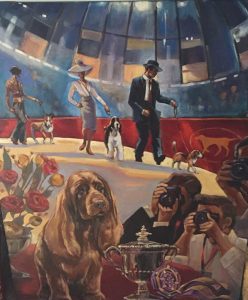 Both JR, the Bichon Frise and Stump, the Sussex Spaniel were surprise, dark horse winners at the Garden in their respective years. JR won under Dorothy MacDonald, defeating Mick, the incomparable Kerry Blue Terrier, handled by Bill McFadden, in a match up of Titans in the dog world. Stump was the oldest dog to win the coveted award. He came out of retirement to celebrate surviving a nearly tragic illness, winning under Sari Tietjen, the roar of the Madison Square Garden crowd ringing in Sommer’s ears.
Both JR, the Bichon Frise and Stump, the Sussex Spaniel were surprise, dark horse winners at the Garden in their respective years. JR won under Dorothy MacDonald, defeating Mick, the incomparable Kerry Blue Terrier, handled by Bill McFadden, in a match up of Titans in the dog world. Stump was the oldest dog to win the coveted award. He came out of retirement to celebrate surviving a nearly tragic illness, winning under Sari Tietjen, the roar of the Madison Square Garden crowd ringing in Sommer’s ears.
Sommer’s family bred smooth fox terriers. In fact, his mother sold legendary dog man Bobby Fisher his first show dog. Sommer showed his first dog at five years old and was hooked.
He later apprenticed for Bob and Jane Forsyth. On his 16th birthday, Sommer moved to Houston and went to work for Michael Kemp.
Best advice
His best advice? “Work hard and never stop trying. This is not something you can learn overnight. Work for it and you will get rewarded.”
“I think the initial steps are taking care of the dogs, cleaning them, feeding them, from there go forward,” Sommer said.
Top dogs
JR was the Number One ranked dog in country in 2001. But Sommer said he’d never shown the dog to MacDonald before that Best in Show lineup.
“How she decided between JR & Mick I’ll never know,” Sommer said. “I fully expected the Kerry to win. When she said ‘Bichon,’ I just ran…
“JR was a great show dog. He just never let down. It could be hot, cold, wet, it didn’t matter. He was so dependable. When you show a dog at that level that is so important,” Sommer added.
Both JR and Stump lived out their lives with Sommer. They were inseparable best friends and died a week apart.
Run!
Sommer’s best recommendations for the Garden include making sure large breed dogs have boots so the salt on the streets doesn’t hurt their feet.
“Go in with all the confidence in the world, hope and pray, and do the best job you can,” Sommer said. “If (the judge) points at you, RUN!
351 – Attitude of Gratitude at the Holidays
Attitude of Gratitude at the Holidays
Merry Christmas, Happy Hanukkah, blessed holy days, praise the universe for Winter Solstice and a joyous new year to one and all. As we celebrate the fourth Pure Dog Talk Christmas, I am focused on an Attitude of gratitude.
Number one
Gratitude to my listeners who encourage me, share the love, provide GREAT ideas and support the show financially through our Patrons program. I am so grateful that you all take the time to listen in to the incredible conversations I am so lucky to have. We surpassed a half million downloads on Thanksgiving day this year, on the three year anniversary of our debut episode. And our audience and listernership is growing by leaps and bounds every day. Please, continue to share the show, bring people to the table who might enjoy our “talks.” And, absolutely, give me your ideas. I can’t swear I’ll get to every single one immediately, but they are ALL on a LOOOOOONG list of great topics for upcoming shows.
Number two
Gratitude to my guests. I am not kidding when I say I am the luckiest girl alive. I get to talk to ALL of the coolest people in dogs. And, after 40 years of grooming, training, handling, now judging, I literally learn something from EVERY single episode. My guests give freely of their time, their experience, their accumulated DECADES of wisdom and offer YOU the listener an unbelievable platform on which to gather knowledge.
Number three
Gratitude to my sponsors. These corporations have made a conscious decision to reach out to the purebred dog community, to support us, our education, our goals, ambitions and dreams. Trupanion and, for the first time, (drumrollllll) announcing our brand new sponsor Embark, have committed not just money but dedication to the purebred dog fancier that is admirable, and entirely worthy of your business. I am a firm believer that we support those companies who support us. Without these amazing companies, Pure Dog Talk would not exist. And that’s a fact. Check out Trupanion’s Breeder Support program and breeding rider. Investigate Embark’s DNA genetic testing. I cannot say enough about Trupanion and Embark and their willingness to invest in YOUR future.
I MUST also shoutout to the Dog Show Superintendent’s Association which was the very FIRST supporter that stepped up and said “YES, Pure Dog Talk is exactly the type of education and mentorship program our sport needs. Here, let us help you.” ALWAYS remember to stop by the superintendent’s desk and give them a shout out for their support of Pure Dog Talk. Our advertisers and partners, from Show Dog Prep School to Leading Edge Dog Show Academy to local clubs, are also due my unending gratitude for their confidence in our platform.
Number four
Moving on, I am and we ALL should be offering our undying gratitude to the Breeders who came before us. We are, without exception, building on the shoulders of those who came before. In my own case, Ray and Lyn Calkins, Cascade Wirehairs, Mildred Revell, Weidenhugel Wirehairs, Bernee Brawn, Justa GWP, Silke Alberts Cadenberg GWP, and the additional mentors who took the time to help me like GWPCA founding member Genevieve Capstaff, Pat Laurans, Joy Brewster, Judy Cheshire, Laura Myles, Doug Ljungren and many more. If you haven’t done it already, make that same list. Send them a little note this Christmas and say thank you. Thank you for the help, the guidance, the information, the direction, the encouragement, the criticism and the hard work YOU have done to bring the breed to the place it is today.
We NEED Dog Breeders
So, now my stump speech…. When my family & I got involved in purebred dogs 40+ years ago, the dog show was chock a block with, you guessed it, dog breeders. Today, dog breeders at the dog show are phantoms, rarely seen. Today, we have exhibitors. And Exhibitors, dog owners, are HUGELY important. BUT, and yes, there is a BUT. We NEED dog Breeders!!!! The Sport desperately needs good breeders of good dogs in order for it to continue to thrive. Please contemplate that instead of adding a platinum grand champion to your bitch, instead you visit with a breeder or mentor in your breed and consider breeding a litter of healthy, well adjusted, beautiful companions for the world to see, of creating a future family of dogs that will bring love and joy to their families for decades to come.
Spirit of Christmas
Meanwhile, I encourage everyone out there in listener land, of any religion or lack thereof, to Carry the Christmas spirit into the new decade … giving, gratitude, welcoming, joy, peace and goodwill to all
Giving
Encourage a new person. Sell them a good dog. Encourage them to breed it with your mentoring. Remember, when we give with a full heart, we expect nothing in return. So when that stunning show puppy from that incredibly special litter is spay against your contract, stop eating your heart out. You sold that puppy, but you gave the gift of love for a lifetime. Be glad you were able to do that.
Gratitude
To the new person, be *grateful* for the hard work and dedication of years and generations that went before. RESPECT…. Try really hard to decide you don’t know everything in the first five minutes. Understand that the judge, the other exhibitors, professional and amateur, know more than you do. And maybe, just maybe, this isn’t an exercise in political bs as your best friend keeps trying to tell you. Maybe you do just need a better dog, or a better grooming, conditioning or handling protocol. Maybe, JUST maybe, it’s better to be QUIET and watch, listen and learn before proclaiming the madness of it all.
Welcoming
Every year at the holidays, we welcome friends and family to our home to celebrate. Try not to emulate the mean girls clique in high school. Ditch the resting bitch face. This is not world peace or finding a cure for cancer. It’s a freaking dog show. We ask for an opinion, we receive said opinion. The rest is on you. Build a network, grow outside your breed, invite the new kid to sit at the cool kids’ table. Handler friends, if you see a new person struggling, help them. If you see a young handler taking on too much weight before they’re ready, offer to mentor them… what’s the worst that can happen? They say no?? you have lost nothing. And perhaps planted a seed. I count myself amongst the worst offender in this. I worked hard to get where I was and had grand opinions that everyone else should do the same… While I was quick to help a new person in my breed or an OH in another breed, I was far too judgy about new folks coming up in the handler ranks who weren’t “raised right” as apprentices. Just like new breeders, they need help, not to be ostracized…. All that accomplishes, is to send them off to folks who won’t teach them well. The good lord knows, there have been efforts that were shunned. So be it. At least we tried.
Joy
Remember the joy you had with your very first ribbon. Share that joy. Help other people find that joy. Growing our sport is a job for every single one of us. If you want to have a job or a fun thing to do, get over your happy selves and just freaking be nice. Not everyone is as experienced, in tune or clever as you are. Railing at them for some imagined slight is a sure bet to send them packing and that’s one less potential dog breeder to grow this arena. I’m looking at a WHOLE lot of you folks. Handlers and owners alike.
Peace and Goodwill to All
Whether they are your competition, your judge, your club members or the show officials. Give the officiousness and turf battles a rest. For the love of DOG, people, please! If the new person in your club suggests reinventing the wheel for the 9 millionth time in your experience… OK! Maybe this person has a great new idea! OR, maybe they don’t. Either way, give them some room to run and you might be surprised. While I always recommend having a backup plan in case someone finds out there is work involved, not just glory, how are you worse off? Go to plan B and forge ahead. We get ourselves so worked into knots, and I speak as someone who has done just such a thing, that we lose sight of the bigger picture.
Finally, let’s all strive to be not just breeders of champions, but champions of breeders.
And this means ALL breeders. Including ones who don’t do it *exactly* to your specifications… <insert eyeroll here>…. While I am the last to encourage subpar breeders, I recognize that you and me and Bobby McGee over there aren’t going to provide all 9 million replacement dogs sought by the public each year. So, again, get over your happy azz and help improve the results of commercial breeders. Educate BYB folks. Encourage them (preferably NOT from the top of your ivory tower) to at least health test their dogs. The next time some rando calls and asks for stud service you surely won’t provide, instead of ignoring it or being a snitty jerk, engage them. Ask questions. Provide education and information about what’s important in your breed. Yes. It takes time. Yes, it can feel as if you’re having a root canal w/o sedation. But guess what. You signed up for it the first day your dog won a ribbon and you became hooked.
SHARE that joy and ENCOURAGE new breeders. There’s no saying that newbie you are choking on talking to won’t get the idea, move forward and become a top breeder. FGS, YOU didn’t all start at the top. Every one of us started *somewhere*…. Be that starting point for someone else. It is the very BEST holiday gift you can give, to yourself, to that new person and to purebred dogs.
And so, as Tiny Tim said, “A Merry Christmas to us all; God bless us, every one!”
350 — Guy Hull: Australian Cattle Dogs and the History of Australia
Australian Cattle Dogs and the History of Australia
Author, researcher and purebred dog enthusiast Guy Hull shares the fascinating history of the development of Australian Cattle Dogs and how they helped build a fledgling nation.
Today’s episode is brought to you in cooperation with Canine Construction and Conformation Facebook group.
Hull is the author of The Dogs That Made Australia: The Story of the Dogs That Brought About Australia’s Transformation from Starving Colony to Pastoral Powerhouse.
Australian Cattle Dogs, Hull said, are the only breed resulting from the successful hybridization of dogs and dingoes.
“Australia, more than any other country, was so dependent on dogs,” Hull said. “Especially native bred dogs that could cope with all of the hardships of the land.”
The progenitors of the breed were created by the Hall family. These early Australian settlers owned 700+ square miles outside of Sydney. They needed a dog that could deal with wild cattle imported from South Africa. Sheep didn’t survive well in the hostile environment of the new country. Beef cattle could survive, but they needed tough dogs to help manage them.
The Hall family crossed an English dog known as the “droving cur,” tailless, square in profile, speckled blue, with dingoes. Dingoes, as a species, are classified as wolves.
Hall’s Heelers
Dingo genes are so strong they dominate domestic genes, Hull said. It took multiple generations of back crossing to the domestic dogs to create the dog we know today. By 1832 the Halls had two types, including the Australian Cattle Dog progenitor.
These dogs, known as Hall’s Heelers, were privately held from 1830-70. Managers of 200 Hall properties carried forward the breeding program.
When the family sold all of their holdings after 1870, the dogs became available to the general public.
Around this same time, long distance droving dogs became redundant with the advent of wire fencing and railroads.
Hall’s dogs were designed to work wild cattle. When cattle became quieter and easier to manage, with the import of new cattle breeds, fences and transportation, the dogs were too “hard” for the domestic cattle.
Border collies, kelpies and other “collie” type breeds became popular to work the more domesticated stock.
The show fraternity preserved the Australian Cattle Dog after its job was no longer needed.
“They are a dog that has re-invented itself as all around Australian guard dog and companion,” Hull said. “They are supposed to have a suspicious glint in their eyes.”
349 – Azawakh: The Camp Guardians of the Tuareg People
Azawakh: The Camp Guardians of the Tuareg People
“Nothing Fragile About This Breed at All”
The Azawakh is one of AKC’s newest recognized breeds. The long-legged, aloof hounds have been in the US since 1988, but were only approved for the hound group in January 2019. With only an estimated 150 dogs in the States and less than 3,000 worldwide, Azawakh fall in to the category of “threatened” breed populations.
Aliya Taylor, a retired Philadelphia Police Officer, acquired her first Azawakh in 2012. She grew up in dogs with her family and eventually showed dogs around her police work. Like everyone else in dogs, she scheduled her vacations around dog shows and hoped for no emergencies.
A desert dog, the Azawakh is taller than it is long. They hail from West Africa where they were known as the camp guardians of the nomadic Tuareg people in Mali, Burkina Faso and Niger.
“These guys are basically guard dogs,” Taylor said. Despite appearing emaciated to the untrained eye, “there is nothing fragile about this breed at all. They will guard you and your property.”
“Everything in that part of the world is long on leg, tall off the ground,” Taylor noted. “Azawakh are an evolutionary development. Man had nothing to do with how the Azawakh looks. They are not mixed with any other type of hound and developed independently in an isolated area.
“If you’re fat in the desert, you don’t survive very long,” Taylor added wryly. While she hears a lot of well-intentioned cooing about her “sick or rescued” dog, Taylor said, “They’re supposed to look like this! These dogs eat more than I do. They are physically unable to carry much body fat.”
Taylor encourages judges to approach the breed appropriately.
“You should never approach head on. Approach on an angle, on the side. Keep a calm body demeanor. Put a hand on the dog’s shoulder. Don’t challenge with direct eye contact. Dogs are still primitive & semi feral. Approach cautiously but without fear. Calm, confident, not rushing, no fast hand movements,” Taylor said.
Azawakhs are not the best choice for a first-time dog owner or someone who hasn’t owned a primitive breed.
“They are not Golden Retrievers. They will not be friendly to strangers. They may not be friendly to every person in your home,” Taylor said.
Nonetheless, “These guys are highly trainable. You can teach them to do anything, but you have to get their trust. You have to treat them as an equal. They’re not like other dogs in the sense that you give them a command,” Taylor opined.

